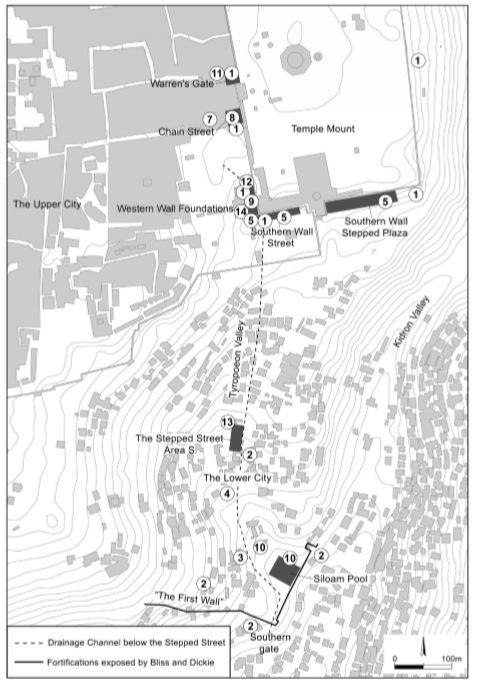A former grand paved street likely used by Jewish pilgrims as they made their way to the Temple in Jerusalem was built by Pontius Pilate, the Roman governor of Judea who is recorded in the Bible as washing his hands of of Jesus’ death, according to Israeli archaeologists.

A drawing showing the street’s location. GRAPHIC: D Levi, IAA; printed by permission of the Survey of Israel
The almost 600 metre long and eight metre wide street, known as the Stepped Street, would have connected the Siloam Pool – where pilgrims could bathe and get fresh water – to the Temple Mount. The street, discovered by British archaeologists in 1894, has long been dated broadly to the “Herodian period”.
However, in an article published in Tel Aviv: The Journal of the Institute of Archaeology earlier this month, archaeologists from the Israel Antiquities Authority have concluded that the street was built during the middle of the first period of direct Roman rule between 30 and 40 AD, specifically during Pilate’s tenure.
The authors of the article write that while depictions of Pilate in historial sources “are quite negative”, “if one looks at Pilate’s actions through the eyes of the Roman Empire, he may emerge as an active, albeit heavy-handed, prefect who worked towards glorifying Jerusalem through public building projects borrowed from the Roman world, such as the construction of an aqueduct that brought water to the city from springs in the Hebron Hills”.
Key to the finding were recent excavations in which they found more than 100 coins beneath the paving stones. The latest coins were dated between 17 and 31 AD, which they say provides “firm evidence” the work was completed during the time that Pontius Pilate governed Judea.
Dr Donald T Ariel, an archaeologist and coin expert with the Israel Antiquities Authority and one of the co-authors of the article, said dating which relies on coins “is very exact”.
“As some coins have the year in which they were minted on them, what that means is that if a coin with the date 30 CE on it is found beneath the street, the street had to be built in the same year or after that coin had been minted, so any time after 30 CE,” he said.
“However, our study goes further, because statistically, coins minted some 10 years later are the most common coins in Jerusalem, so not having them beneath the street means the street was built before their appearance, in other words only in the time of Pilate.”





